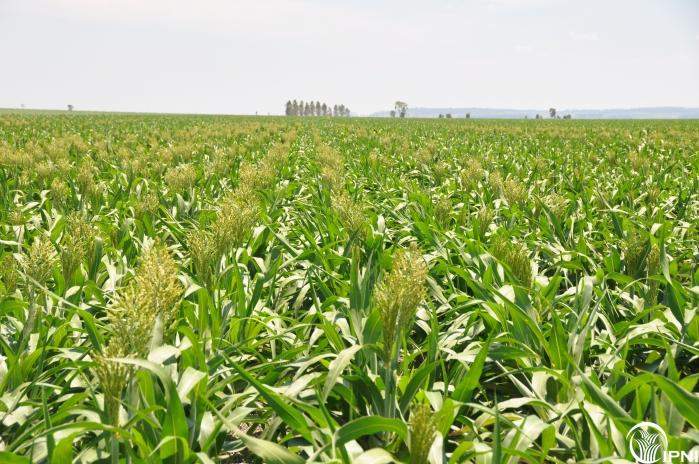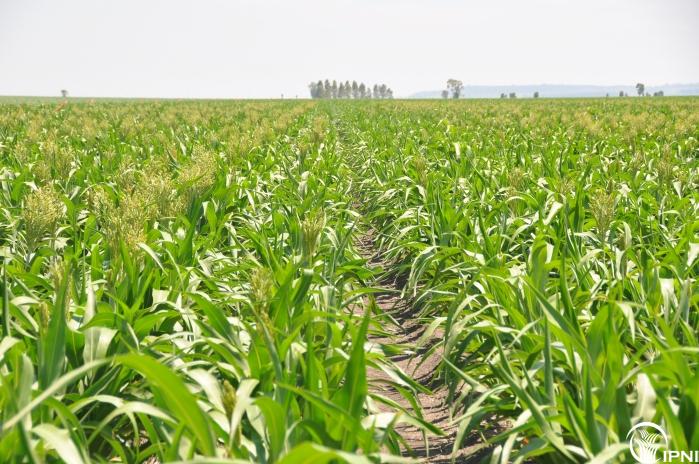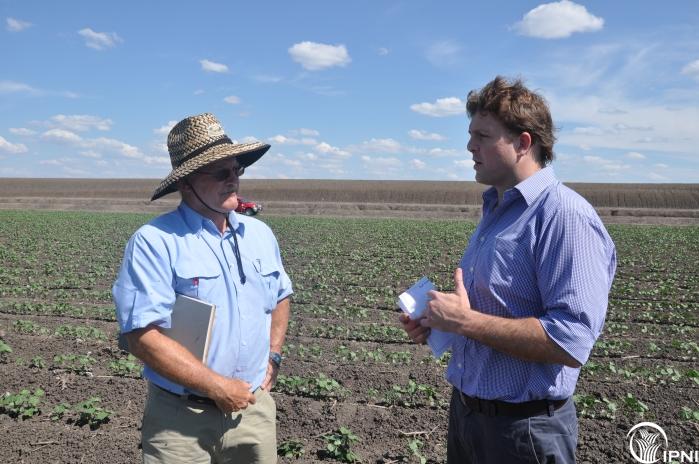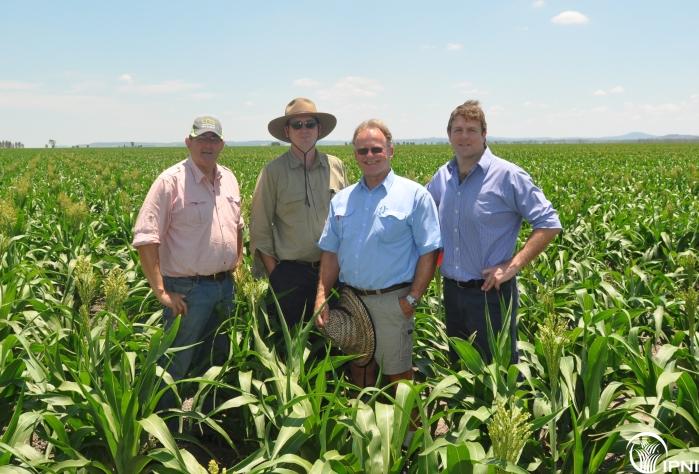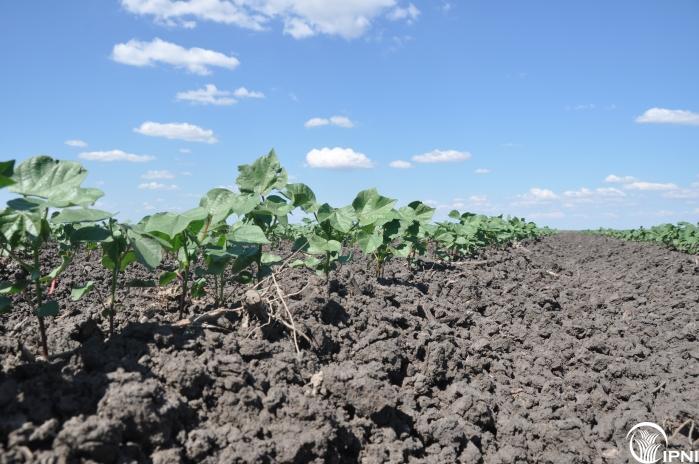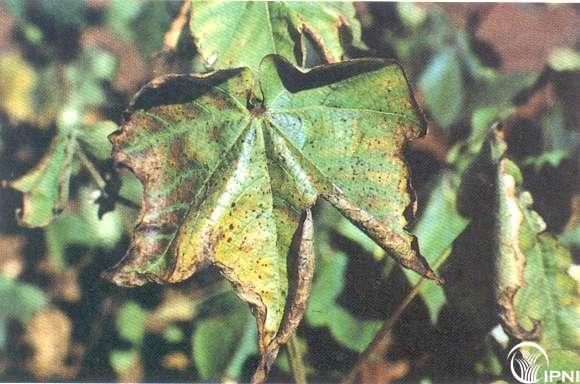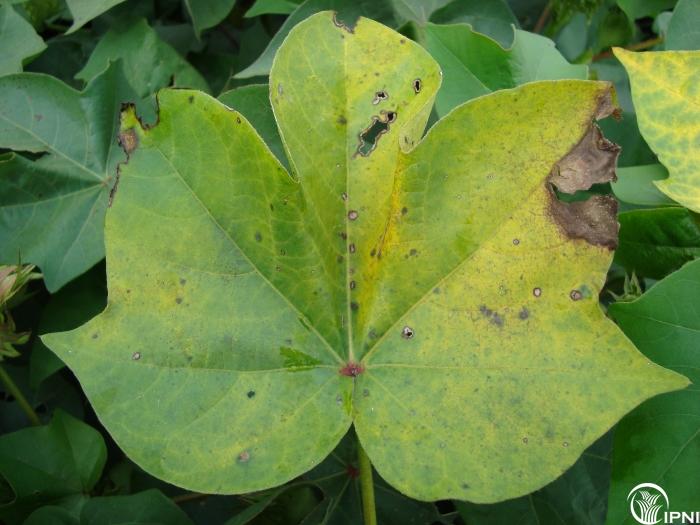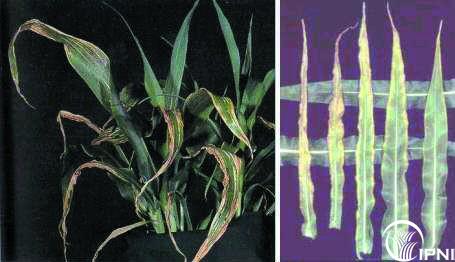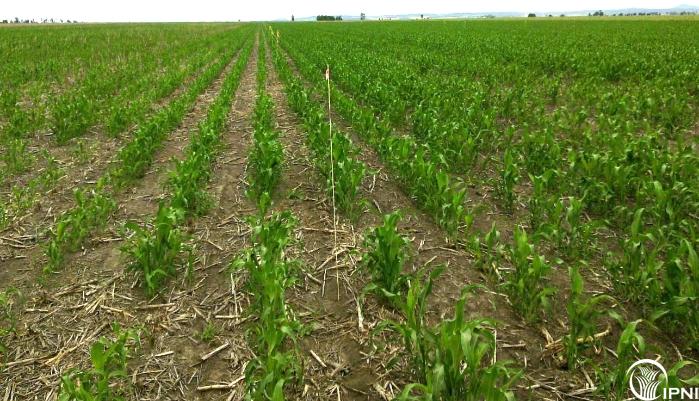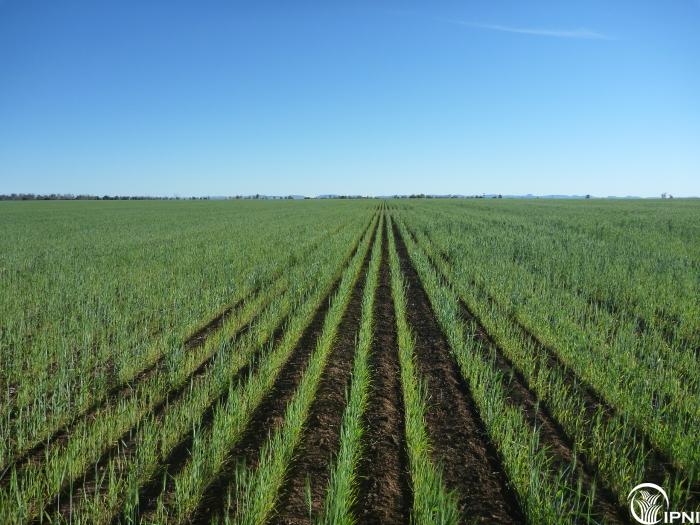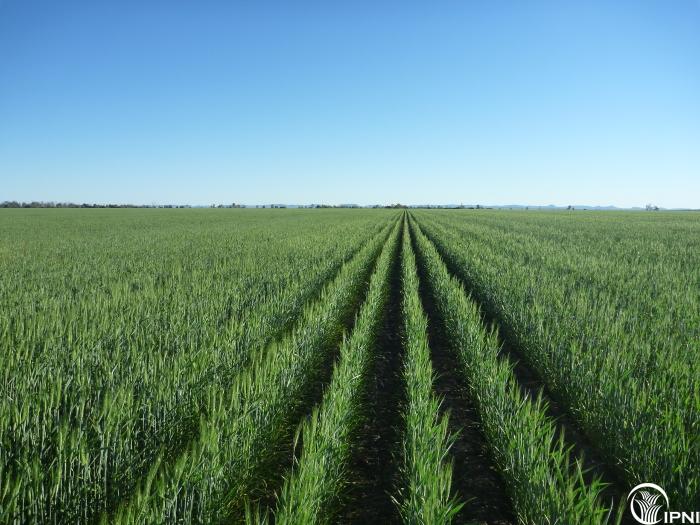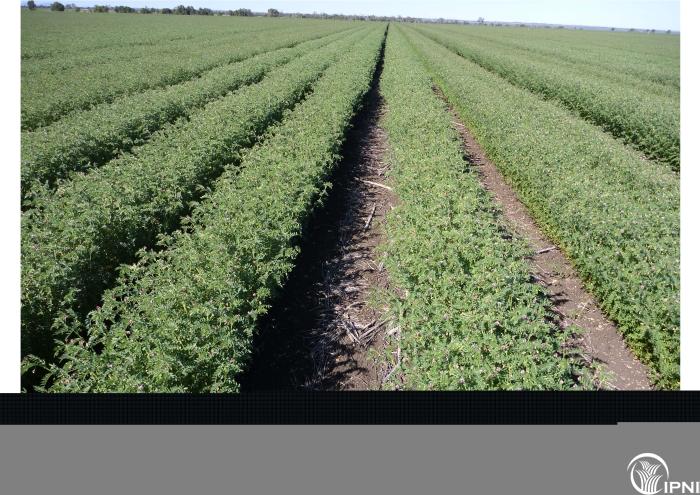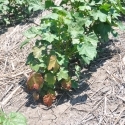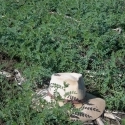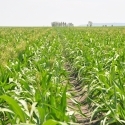14 Jan 2013
Managing K in northern cropping systems
Overview of current research on K placement for wheat, cotton, chickpea and sorghum.
 Sorghum crop in southeastern Queensland
Sorghum crop in southeastern Queensland
K management for northern cropping systems
Previous Research Results:
Prior to 2012, field research in the southeast and central Queensland northern cropping zones suggested that multiple nutrient deficiencies were occuring and significantly reducing yield potentials for both summer and winter crops.
Table 1 Summary of yield responses (kg/ha) to fertiliser treatments in wheat crops, 2011 (data of M. Bell and D. Lester).
Location | Biniguy | Brookstead | Brigalow | Wondalli | Gindie | |||
Site history | Double crop after cotton | Long fallow | Double crop after sorghum (SQFS) | Double crop after sorghum | Short fallow after failed chickpea | Short fallow after failed chickpea | Short fallow after failed wheat | Short fallow after wheat |
Farmer reference | 680 | 6950 | 3070 | 4020 | 2740 | 3090 | 3640 | 3300 |
Starter P | NA | 6950 | 3070 | 4020 | 2740 | 3090 | 4020 | 3540 |
Small extra N | 1110 | 7390 | ||||||
Extra P | 1060* | 7970* | 4460 | 4600* | 4340 | 4700 | 3780* | |
Extra P and S | 1030* | 7880* | 4420* | 4590* | ||||
Extra P and K | 1040* | 7240* | 4350* | |||||
Extra PKS | 970* | 7610* | 4550* | 4900* | ||||
Best response (% farmer control) | 430 kg/ha (65% - N) | 1020 kg/ha (15% - P) | 1390 kg/ha (45% - P) | 580 kg/ha (14% -P) | 2160 kg/ha (79% - PKS) | 1250 kg/ha (40% - P) | 1060 kg/ha (29% - P) | 1050 kg/ha (32% - PK) |
Experimental program 2012-2014
The objective of these experiments is to evaluate a range of K delivery strategies to overcome subsoil nutrient limitations for a mixed crop opportunity farming system.
The objective of these experiments is to evaluate a range of K delivery strategies to overcome subsoil nutrient limitations for a mixed crop, opportunity farming system.
All experiments are in commercial fields, with large plots where the fertiliser treatments have been applied with experimental equipment, while the crops are sown and managed with commercial scale equipment. Fertiliser strategies are set and the crops change according to season and opportunity.
These experiments are supported by Canpotex and Agrow, and are part of larger Grains Research and Development Corporation and Cotton Research and Development Corporation projects in collaboration with the Queensland Department of Agriculture, Fisheries and Forestry (QDAFF) and the Queensland Alliance for Agriculture and Food Innovation (QAAFI). The project leader is Dr Mike Bell and Mr David Lester leads the experimental program.
The project currently has established 4 experimental sites, focused on either identifying the appropriate placement strategies for K fertiliser in irrigated versus rainfed cropping systems, or identifying the most appropriate combination of fertiliser nutrients (including K) to address declining native soil fertility in broadacre rainfed cropping systems on heavy clay soils. Site descriptions follow –
‘Cecilvale’ near Brookstead, in the southern Darling Downs
Site Description: Soil type is a grey Vertosol, crops are rainfed and rotations are flexible based on cropping opportunities and stored soil moisture. Summer sorghum and cotton are grown in rows 100-150cm apart, while winter chickpeas and wheat are grown in rows 50cm (chickpea) to 30cm (wheat) apart.
| Chemical characterisation | 0-10 cm | 10-30 cm |
| Average of ECEC (cmol/kg) | 23 | 35 |
| Exchangable K (cmol/kg) | 0.41 | 0.25 |
| Tetraphenyl borate – K (cmol/kg) | ND | |
| Na:K ratio | 0.70 | 3.14 |
| Colwell P (mg/kg) | 28 | 4 |
| BSES P (mg/kg) | 37 | 11 |
Site 1: Treatments applied July 2010. Sorghum was sown in 2010-11; wheat was sown in 2011; and the site was long fallowed to cotton in 2012-13. The objective is to investigate the effects of addressing multiple nutrient deficiencies.
Treatments: P alone, K alone, S alone, P+S, P+K, K+S, PKS, Double PKS. (6 replicates). All fertiliser deep placed in 50cm bands.
Site 2: established Jan 2011. Wheat was grown in 2011, followed by sorghum in 2012-13. The objective is to investigate strategies on the placement of high rates of K by altering row spacing and depth of placement. Rates of 200 kg K/ha have been applied at the start of the experiment and no further K applied, reflecting the need to minimize soil disturbance in an otherwise zero tillage, controlled traffic cropping system.
Treatments: Controls (3 per replicate), 3 band spacings (25, 50 & 100 cm) combined factorially with 3 placement depths (~10 cm, ~25 cm, split between 10 and 25 cm).
‘South Wyobie’ near Warra, central Darling Downs
Site description: Soil type is a grey Vertosol, and under normal conditions, crops are fully (flood) irrigated. Rotations are generally cotton after cotton, as long as water storages are full, with grain (sorghum, wheat) or grain legume (chickpea) crops grown under rainfed conditions if irrigation water is not available. Irrigated cotton is generally grown in raised beds/ridges 1m apart, between irrigation furrows. These beds are cultivated out after each cotton harvest, as part of regional IPM strategies, and then further cultivated and re-established for the next crop during the winter fallow. The raised beds/ridges are typically 20-25cm higher than the bottom of the irrigation furrow, and consist of mainly aggregated soil from the top 15cm of the field. The standard 0-30cm soil test depth in these systems reflects that tillage homogenization and aggregation of the cultivated layer into ridges and furrows.
| Chemical
characterization | pH | Exch Ca | Exch K | Tetraphenylborate K | Exch Mg | Exch Na | CEC |
| 0-30cm | 8.1 | 14.5 | 0.31 | 0.58 | 8.9 | 1.7 | 25.4 |
Site 1 Treatments applied mid 2011. Cotton was grown in 2011-12 and 2012-13.
The trial objective is to investigate strategies for placement of high rates of K by altering band spacing and depth of placement. Given the irrigated system, spacings are more restricted than at rainfed sites (ie. no K applied in the furrow area), and there are also non-banded treatments that reflect current practice of broadcasting K and P fertilisers onto the soil surface and incorporating by tillage and hill formation. Rates of 200 kg K/ha have been applied at the start of the experiment and no further K applied. This again reflects the desire to minimize the amount of deep tillage, especially in soils like this one were sodicity increases with depth.
Treatments: Controls (3 per replicate), 3 row spacings (25, 50 & 100 cm) combined factorially with 3 placement depths (~10 cm, ~25 cm, split between 10 and 25 cm), in addition to treatments where K was surface broadcast and incorporated.
Sites 2 and 3. Treatments also applied mid 2011, with irrigated cotton grown in 2011-12 and 2012-13. Studies were designed to (i) investigate the effects of addressing multiple nutrient deficiencies (P, K and S) and the interactions between the applied nutrients and crop yield and quality, incidence of premature senescence and the expression of soil-borne disease; and (ii) investigate strategies for placement of high rates of P by altering band spacing and depth of placement..
Treatments: Site 2 consists of applications of P alone, K alone, S alone, P+S, P+K, K+S, PKS and Double PKS (6 replicates), with all fertiliser applied in bands 25cm apart and split between shallow (10cm) and deep (25cm) depths. Site 3 is the mirror image of Site 1, except for the substitution of P fertiliser (40 kg P/ha) for K.
‘Bendee’, Gindie district, Central Queensland
Site Description: Soil type is also a grey Vertosol, heavier than the Brookstead and Warra sites but lighter than the site at Capella. Crops are rainfed and rotations are flexible based on cropping opportunities and stored soil moisture. Summer sorghum or mungbeans are typically rotated with winter wheat or chickpeas, with the drier environments in this region often resulting in extended fallow periods while the growers wait for a recharge of the soil water profile. Sorghum is grown in rows 100-150cm apart, while mungbeans, winter chickpeas and wheat grown are grown in rows generally 50cm apart.
| Chemical characterisation | 0-10 cm | 10-30 cm |
| Average of ECEC (cmol/kg) | 35 | 38 |
| Exchangable K (cmol/kg) | 0.17 | 0.07 |
| Tetraphenyl borate – K (cmol/kg) | ND | 0.09 |
| Na:K ratio | 1.0 | 5.3 |
| Colwell P (mg/kg) | 13 | <5 |
| BSES P (mg/kg) | 12 | 5 |
Fertiliser was applied in July 2011. Sorghum was grown in 2011-12 and again in 2012-13. Given the low P in the topsoil and subsoil, all fertilisers were split between shallow (10cm) and deep (25cm) bands spaced 40cm apart. The trial objective is to quantify the benefits that can be achieved by addressing multiple nutrient deficiencies in a soil where fertility run down has resulted in 2 or 3 nutrients nearing exhaustion simultaneously. These studies will help to change the traditional approach to fertiliser practices (N only, perhaps with a low rate of starter P) in an extensive broadacre cropping region.
Treatments: P alone, K alone, S alone, P+S, P+K, K+S, PKS, Double PKS. (6 replicates). High rates of P (40 P/ha), S (30 kg S/ha) and K (200 kg K/ha) were applied to allow observations over multiple crop years without further soil disturbance in what is normally a zero tillage system.
‘Stranraer’ Capella, Central Queensland
Site Description: Soil type is also a grey Vertosol, but has the highest CEC in the current program. This soil is typical of a lot of the heavier clay soils found in this region, with some sites having CEC > 100 cmol/kg.
The cropping system and management strategies are similar to those employed at ‘Bendee’, with rainfed opportunity cropping of winter and summer grains and grain legumes.
| Chemical characterisation | 0-10 cm | 10-30 cm |
| Average of ECEC (cmol/kg) | 58 | 59 |
| Exchangable K (cmol/kg) | 0.37 | 0.09 |
| Tetraphenyl borate – K (cmol/kg) | ND | 0.11 |
| Na:K ratio | 0.82 | 8.28 |
| Colwell P (mg/kg) | 9 | <5 |
| BSES P (mg/kg) | 13 | 9 |
| KCl S (mg/kg) | 2.8 | 1.5 |
Fertiliser was applied July 2011, with the site long-fallowed until sown to chickpea in 2012. It is anticipated this site will be sown to wheat in 2013. All fertilisers were again split between shallow (10cm) and deep (25cm) bands spaced 40cm apart.
The trial has similar objectives to that at ‘Bendee’ - quantifying the benefits of addressing multiple nutrient deficiencies in a soil where fertility run down has resulted in 2 or 3 nutrients nearing exhaustion simultaneously. Particular interest lies in the response to banded K in soils with such high CECs and high K buffer capacities, relative to soils with moderate (‘Bendee’) and moderate- low (‘Cecilvale’ and ‘South Wyobie’) CECs for the Vertosol classification.
Treatments: P alone, K alone, S alone, P+S, P+K, K+S, PKS, Double PKS. (6 replicates). High rates of P (40 P/ha), S (30 kg S/ha) and K (200 kg K/ha) were applied to allow observations over multiple crop years without further soil disturbance in what is normally a zero tillage system.

